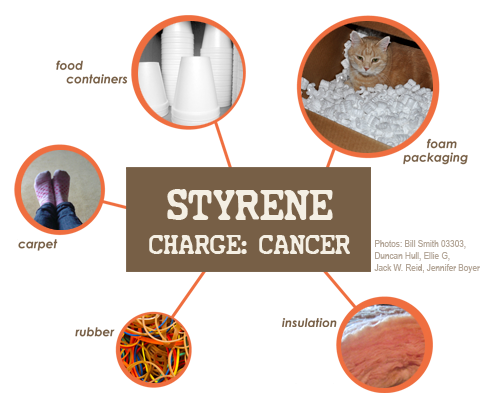Styrene
Description:
Styrene is primarily a synthetic chemical that is used extensively in the manufacture of plastics, rubber, and resins. It is also known as vinylbenzene, ethenylbenzene, cinnamene, or phenylethylene. Many workers, including those who make boats, tubs, and showers, are potentially exposed to styrene. Health effects from exposure to styrene may involve the central nervous system and include complaints of headache, fatigue, dizziness, confusion, drowsiness, malaise, difficulty in concentrating, and a feeling of intoxication

| Molecular Formula | C8H8 or C6H5CHCH2 |
|---|---|
| Synonyms |
STYRENE Ethenylbenzene Phenylethylene Vinylbenzene 100-42-5 |
| Molecular Weight | 104.15 |
Styrene is primarily a synthetic chemical. It is also known as vinylbenzene, ethenylbenzene, cinnamene, or phenylethylene. It’s a colorless liquid that evaporates easily and has a sweet smell. It often contains other chemicals that give it a sharp, unpleasant smell. It dissolves in some liquids but doesn’t dissolve easily in water. Billions of pounds are produced each year to make products such as rubber, plastic, insulation, fiberglass, pipes, automobile parts, food containers, and carpet backing. Most of these products contain styrene linked together in a long chain (polystyrene) as well as unlinked styrene. Low levels of styrene also occur naturally in a variety of foods such as fruits, vegetables, nuts, beverages, and meats.
